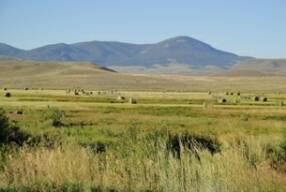A growing national debate about the difference between “perpetual” easements and “term” easements should pique the interest of Colorado leaders, again.
Years ago when I was at Club 20 during the 1990s, Western Slope leaders became part of a new national movement in support of the idea of conservation easements to preserve agricultural land and other open space. The concept was simple, and still is. One person’s farm is everyone else’s open space. So if society expects a landowner to preserve that open space – and forego the profit otherwise attainable by selling to developers – society ought to pay the farmer for that foregone value. A couple New England states had pioneered the idea of allowing the sale of “development rights” on farmland, a clever way to stop subdivisions by giving farms the one thing they most needed, cash. There was a budding interest among conservation groups, but operating entirely with donated funds made it difficult for them to create much national interest in the idea.
Club 20’s support was instrumental in convincing the Colorado legislature to provide some of the nation’s first publicly-funded incentives for conservation easements. Colorado became one of the first five states to provide income tax credits to owners who donated even part of the value of conservation easements to preserve land against future development. By 2000, Colorado strengthened the incentive by making those tax credits marketable, since so many farmers and ranchers didn’t need the tax credits themselves. The trend swept a number of other states and by 2006 a federal tax deduction was also added. Some states have also provided relief from property taxes, and even estate taxes, for easement donors.All of the tax and other incentives available across the nation have one requirement in common. The conservation easement must be “in perpetuity.” The right to develop that land is sold forever, and the deed restriction follows the land no matter who the future owners might be.
I remember Club 20’s long-time Moffat County board member T. Wright Dickinson raising this issue in the very first discussion, and continuing to raise it as the movement progressed, arguing for term easements instead of perpetual ones. The difference between buying development rights forever and buying them for a specified time period is an important distinction that has remained part of the debate for 25 years. As he said at the time, it is difficult to imagine the concept of “perpetuity.”
In 1800, over 70 percent of all Americans were farmers. Even in 1900, nearly half of all Americans lived on about 6 million farms with an average size of 140 acres. What if laws had been adopted to preserve that agriculture-based economy “forever?” Today barely 2 percent of Americans work on a third as many farms, with an average size more than 4 times larger. Many of those farms are now owned by corporations, not families, but they feed a larger portion of the world with better food and lower prices than ever. Who could have envisioned that a mere century ago? More to the point, what is the long-term future of agriculture? How long is “forever?”
If it is still difficult in 100 years to make a living in agriculture, and landowners can no longer sell conservation easements to make some badly-needed cash because their grandparents already did that, what choices will they have to stay in business? And what tools will the public have left to preserve farming?
Consider these improbabilities: your farm is declared a nationally-important wetland and you are prohibited from continuing irrigation; a previously unknown endangered species is discovered on your farm and plowing is banned; your land bordering a wildlife refuge is designated a “buffer zone” to protect migratory bird habitat; the Forest Service takes away your water rights because your ditch crosses the forest on its way to your ranch. It may seem far-fetched that such policies could actually make farming impossible, but are all these scenarios really beyond imagination? Can we really imagine what agriculture will look like five generations into the future?
Obviously, a conservation easement that only lasts a generation is worth less money to the public than a perpetual easement, but term easements have some value, too, and a few states now allow them. There is a new movement afoot to make that tool available nationally, a long-overdue idea. Conservation easements are a creative way to preserve a long-term vision. But are we really so arrogant as to think we have a “forever” vision?
A version of this column originally appeared in the Grand Junction Daily Sentinel November 18, 2016.





Comments on this entry are closed.